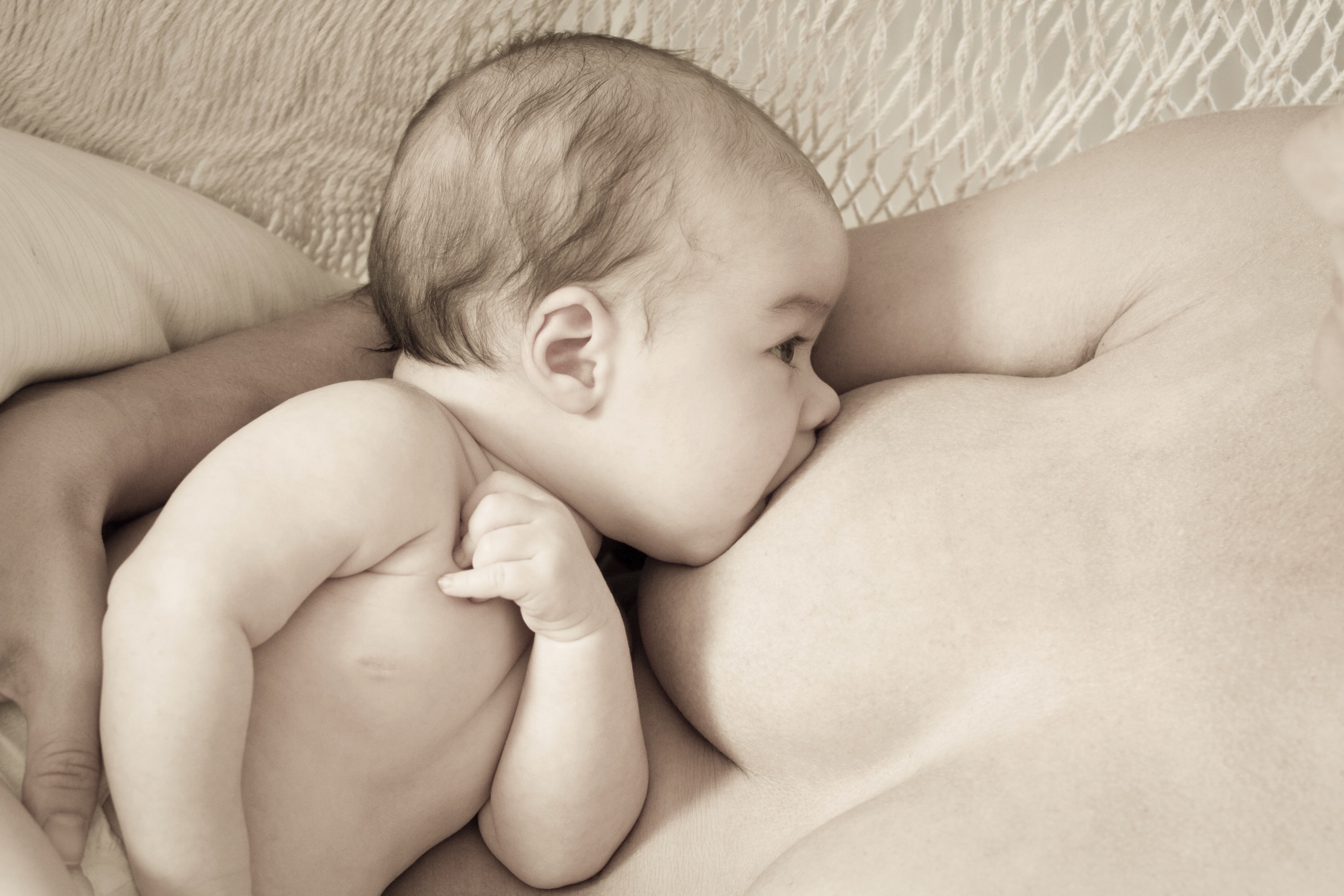New parents receive a lot of advice about how to feed their baby. Current research and feeding guidelines recommend that new parents follow their infant’s cues when it comes to feeding.
All healthy full term babies show hunger cues that tell parents it is time to eat. Some of these cues include:
- an increase in sucking movements
- sucking on their fingers
- turning their head and sucking (this is called the rooting reflex)
- clenching their fingers and fists over their chest and tummy (this is called the hunger posture)
If moms see any of these cues they can offer a feed. Crying is a very late hunger cue and babies may find it more difficult to focus on sucking or latching to breastfeed if they have been crying for a prolonged period. Having your baby close to you and holding your baby “skin-to-skin” especially in the early days and weeks allows you to learn your baby’s early feeding cues.
Breastfed babies usually feed every two or three hours in their first few weeks. New moms can expect to feed their newborns at least 8 times in 24 hours. That doesn’t mean the baby will stick to an every three hour schedule around the clock. Watch your baby. Baby may want to feed every two hours for three feedings and then sleep a 4 hour stretch. Occasionally, in the first couple weeks, babies may need to be awakened to feed if they are sleeping for extended periods and not feeding a minimum of 8 feedings in 24 hours. Remember, you won’t need to continue to wake up your baby for feedings. This is short-term only.
Each baby has their own pace when eating. Some babies eat quickly and some take their time, let your baby set the pace. Watching your baby’s cues will also let you know when they have had enough to eat. Babies who have had a good feeding look relaxed. Their arms and legs extend and their fingers are no longer tightly clenched into fists. Often the baby is very drowsy and drifts off to sleep.
Look for your baby’s cues. Trust that your baby will let you know when they are hungry and when they are full.

